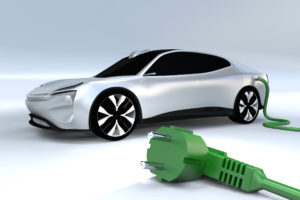NTSB Reports First Responders at Risk in Electric Vehicle (EV) Battery Fires

Electric Vehicles
Imagine a situation in which a team of firefighters responding to a vehicle fire cannot extinguish the flames. Gallon after gallon of water does not douse them. Pile after pile of foam fails to finish them off. The car keeps burning, and the smoke keeps coming. Sounds like a scene from an action-adventure movie, right?
Wrong. The events above actually unfolded on a Hollywood, Calif., street 2½ years ago. Fortunately, no deaths or injuries occurred. The automobile involved was a 2014 Tesla Model S – an electric car – driven by a 44-year-old man.
“Motorists flagged down the Tesla driver because they saw smoke coming from the vehicle,” according to the executive summary of a preliminary report by the National Transportation Safety Board (NTSB). “The driver stopped the Tesla next to the north-side curb in the 7800 block of Santa Monica Boulevard and exited the vehicle. A nearby Los Angeles Police Department patrol car also stopped, and the officers directed traffic around the burning car. The Los Angeles County Fire Department responded to the vehicle fire, dispatching an engine unit from station #8, which is located at 7643 Santa Monica Boulevard. The fire was extinguished, and there were no injuries. The vehicle was towed from the scene without incident.”
That fire – and three others in electric vehicles – prompted the NTSB to investigate the lithium-ion batteries that caused the outbreaks.
“The NTSB started investigating battery fires after crashes and fires in Lake Forest and Mountain View, California, and in Ft. Lauderdale, Florida, in 2017 and 2018,” states an Associated Press (AP) story titled “NTSB says vehicle battery fires pose risks to 1st responders.” “It also probed a non-crash fire in West Hollywood, California. Three of the batteries reignited after fires were extinguished. All four vehicles were made by Tesla, which is the top-selling electric vehicle maker in the U.S.”
The investigation led to issuing an 80-page report, “Safety Risks to Emergency Responders from Lithium-Ion Battery Fires in Electric Vehicles,” in November 2020.
“In an 80-page report the NTSB wrote that a review of emergency response guidelines from 36 manufacturers found that all had ways to mitigate the risk of high-voltage shocks including methods for disconnecting the battery,” the AP story states. “But none of the guides spoke to limiting the risk of energy stored in the batteries, such as procedures for minimizing reignition or instructions on where and how to spray water to cool the batteries, the agency said. One way to deal with damaged batteries is to pull them from the vehicle and soak them in a saltwater bath to discharge the energy, the NTSB wrote.”
Such frightening findings come when automobile manufacturers are increasing their production of electric cars – so much so it seems they are in a race against each other to crank them out from the line. One reason is that electric cars are an environmentally friendly alternative to the gasoline-fueled guzzlers of the past that harm the earth’s atmosphere.
“Plug-in electric vehicles (also known as electric cars or EVs) are connected, fun, and practical,” explains the Office of Energy Efficiency & Renewable Energy. “They can reduce emissions and even save you money. EVs can also reduce the emissions that contribute to climate change and smog, improving public health and reducing ecological damage. Charging your EV on renewable energy such as solar or wind minimizes these emissions even more.”
Despite all the benefits of EVs, the risks of battery fires and the unpredictable nature of lithium-ion devices weigh in rather heavily. The NTSB recommends a two-fold approach. First, automobile manufacturers should detail in their manuals how to fight fires in lithium-ion batteries and minimize the damage during emergency responses. Second, industry groups representing firefighters should inform their members about the dangers of answering calls related to lithium-ion battery fires.
“Crash damage and resulting fires may prevent first responders from accessing the high-voltage disconnects in electric vehicles,” according to the NTSB report. “The instructions in most manufacturers’ emergency response guides for fighting high-voltage lithium-ion battery fires lack necessary, vehicle-specific details on suppressing the fires. Thermal runaway and multiple battery reignitions after initial fire suppression are safety risks in high-voltage lithium-ion battery fires.”
The NTSB report continues, “Action by the National Highway Traffic Safety Administration, similar to that taken by the European New Car Assessment Programme, to incorporate scoring relative to the availability of a manufacturer’s emergency response guide and its adherence to International Organization for Standardization standard 17840 and SAE International recommended practice J2990 into the US New Car Assessment Program, would be an incentive for manufacturers of vehicles sold in the United States with high-voltage lithium-ion battery systems to comply with those standards. Although existing standards address damage sustained by high-voltage lithium-ion battery systems in survivable crashes, as defined by federal crash standards, they do not address high-speed, high-severity crashes resulting in damage to high-voltage lithium-ion batteries and the associated stranded energy.”
Now more than ever, Americans know how vitally important first responders are to saving lives. Addressing the problem of potentially lethal battery fires and developing a solution is paramount.
Share This


